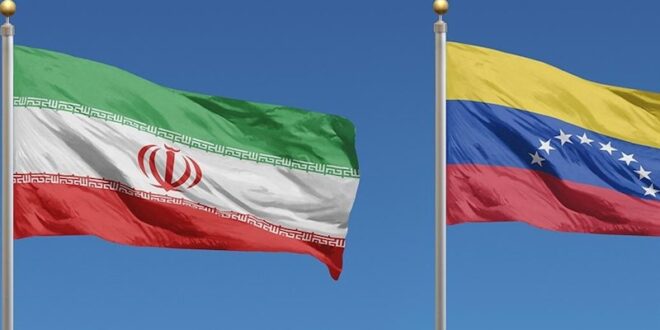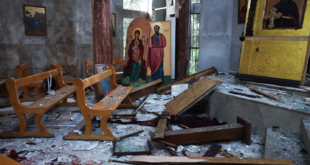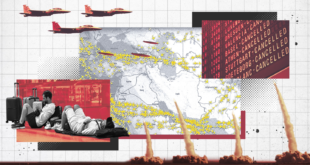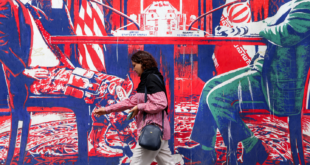The strategic partnership between the Bolivarian Republic of Venezuela and the Islamic Republic of Iran is one of the most intriguing alliances that have emerged in recent times. Undoubtedly, it is an extraordinary geopolitical phenomenon that connects two different continents, Asia (the Middle East) and South America, with the aim of achieving political, economic, and military interests. This alliance is not just a product of current political circumstances, but the result of excellent diplomatic, economic, and political relations that have developed over the past quarter-century.
Caracas and Tehran are more than 11,000 kilometers apart by air, but the distance has not hindered their partnership. The political systems of the two countries are very different. Both technically have democracies, but in Iran, it is a theocracy where the supreme leader Ayatollah Ali Khamenei holds the ultimate authority, while Venezuela operates under an authoritarian socialist regime led by President Nicolas Maduro. Venezuelans are mostly Catholics, and Iranians are Shia Muslims; the former are Latin Americans, and the latter are Indo-Europeans. It could be said that these differences have facilitated their connection.
Beginnings
The era of Venezuelan-Iranian friendship began in the early 2000s when the controversial leftist president Hugo Chavez came to power in Venezuela. During his tenure, he visited Iran numerous times. The first visit took place in 2001, when he stated that he had come to Iran to “prepare the way for peace, justice, stability, and progress for the 21st century.” The then Iranian President Mohammad Khatami visited Venezuela three times. During a visit in 2005, Chavez awarded him the Order of the Liberator and called him “a tireless fighter for the right causes in the world.”
The rapprochement of the two nations, imbued with strong anti-imperialist, i.e., anti-American rhetoric, did not go unnoticed by Washington, causing significant concern within the Bush administration. With Mahmoud Ahmadinejad coming to power in Iran, bilateral relations began to gain specific features based on the friendly relationship between the two leaders. Both became icons of the struggle against the aggressive foreign policy of the USA in the period following the wars in Afghanistan and Iraq. America’s intentions were to undermine the governments of numerous states that did not want to submit to a unipolar world order and refused to relinquish sovereignty over their natural resources. Both Iran and Venezuela had a crucial resource: oil, which American companies were keen to acquire, and they also held important geostrategic positions on their continents.
The Vanguard of 21st Century Anti-Imperialism
In May 2006, it was announced that Caracas was ready to sell its 21 F-16 fighter jets (American-made) to Tehran. That same month, Chavez expressed support for Iran’s intention to produce nuclear energy. In July 2006, Iran faced Western criticism for developing its nuclear program and supporting the Lebanese Hezbollah in its fight against Israel. It was during this time that Chavez visited Tehran and committed Venezuela to “stand by Iran at any time under any conditions. We are with you and Iran forever. As long as we remain united, we can defeat imperialism, but if we are divided, they will push us aside.”
“I feel that I have found a brother and a fighting friend after meeting with Chavez. We believe that Iran and Venezuela should share all experiences with each other, stay by each other, and support each other,” Ahmadinejad responded. During that visit, Chavez made the legendary statement at the University of Tehran: “If the US succeeds in consolidating its dominance, then humanity has no future. Therefore, we need to save humanity and put an end to the US.”
In the mid-2000s, the Iranian-Venezuelan alliance was the vanguard of a new transregional anti-American (anti-imperialist) alliance that today is led by China and Russia.
In January 2007, the two presidents announced that they would use money from the previously announced Anti-American Fund of $2 billion to invest in the fight of other countries against American imperialism. In March of that year, Chavez stated that he disagreed with Ahmadinejad’s call to wipe Israel off the map. But that did not prevent them from declaring an “Axis of Unity” against American imperialism in July. In 2009, during the G20 Summit in London, Ahmadinejad and Chavez held a separate meeting they called the G2 Summit. During this meeting, the formation of a joint Iranian-Venezuelan development bank with an initial capital of $200 million was announced.
During Chavez’s visit to Tehran the following year, the continuation of the strategic alliance was announced with the aim of “establishing a new world order based on humanity and justice,” as stated by the Iranian leader. Delegations agreed to deepen cooperation in the fields of oil, natural gas, textiles, trade, and public housing. Iran thus became Chavez’s main ally in the Middle East alongside Gaddafi’s Libya and Assad’s Syria, which would soon be engulfed by the Arab Spring.
In 2011, the Obama administration imposed sanctions on the Venezuelan state oil company PDVSA for opposing US sanctions and sending two oil tankers to Iran. In September, the two countries signed agreements on factory production, energy, construction, and agriculture during talks in Caracas. The then Venezuelan Foreign Minister Nicolas Maduro stated: “While imperialism and its criminal elites have declared war on the Muslim people for over ten years, we in the Bolivarian Revolution, led by President Chavez, declare our love for the culture of the Muslim people, their entire history, and proclaim our eternal brotherhood.”
Great Words, but Also Deeds
After Chavez’s death in March 2013, Maduro became the new president, continuing to foster excellent relations with Iran. The day after Chavez’s death, Ahmadinejad paid tribute to his late friend, writing that Chavez would “return on the Day of Resurrection” along with religious figures such as Jesus Christ. At the funeral, Ahmadinejad embraced Chavez’s mother as a gesture of sympathy and support, which resonated negatively in some conservative circles in Iran, just like the previous statement. At that time, annual trade between the two countries was estimated at hundreds of millions of dollars. This was a significant increase from 2001, when trade exchange amounted to only around $189,000.
From 2001 to 2013, the governments of Tehran and Caracas signed nearly 300 agreements on numerous projects, including housing construction, cement factories, car manufacturing, the construction of hospitals, department stores, dairy farms, and seafood production companies. The value of Iranian company investments in Venezuela is estimated between 15 and 20 billion dollars.
Chavez’s death and Ahmadinejad’s departure from power in June 2013 did not mark the end of the Iranian-Venezuelan friendship, which continued. Each country remains a crucial ally to the other. Presidents Maduro and Hassan Rouhani continued in the footsteps of their predecessors. By August 2014, the two countries had signed 265 agreements stemming from 58 projects in industry, ecology, trade, energy, culture, and more. During that month, during a meeting between Venezuelan Foreign Minister Elias Jaua and President Rouhani, Iran supported Maduro’s government, which was beginning to face significant challenges: shortages of consumer goods and mass anti-government demonstrations that included violence from both protesters and police. Both expressed support for the Palestinian state and refused to legitimize the State of Israel. Maduro visited Iran the following month.
During Maduro’s next visit to Iran in January 2015, the topics were dominated by global low oil prices. Both sides blamed the US for the low prices. Rouhani confirmed that Iran and Venezuela would join forces to “foil the strategies of world powers… and stabilize oil prices at a reasonable level.”
The drastically low oil prices severely impacted Venezuela’s economy, as oil make up 90% of its exports. In June 2015, a series of intergovernmental agreements were signed in economic, financial, technological, and scientific fields, with Iran promising Venezuela medicines and medical equipment. In November 2015, Maduro visited Iran again, where continued cooperation was promised. In August 2016, Iranian Foreign Minister Javad Zarif visited Caracas in a live broadcast on state television. The meeting was a political show to demonstrate that Venezuela was not internationally isolated, defying the US, which it claims to be in an economic war with, but also served Iran, whose minister toured Latin America.
Partnership in the Era of the Pandemic and New US Pressures
Both Iran and Venezuela have lived under US sanctions for years. During Trump’s administration, sanctions on Venezuela, first imposed by Obama in 2014, were intensified in 2017. Trump’s administration withdrew the US from the Iranian nuclear deal in 2018 and imposed new sanctions on Iran. As a result of these US actions, Tehran and Caracas undertook joint projects to better cope with the sanctions. Amid acute fuel shortages while Maduro was preoccupied with protests following the contested 2018 presidential elections and Juan Guaido’s 2019 self-proclamation as president, Iran sent several crucial oil shipments to Venezuela.
Unlike Western countries that recognized Guaido, for Iran, Maduro was and remained the only legitimate president. In May 2020, a fleet of five Iranian oil tankers transported 1.53 million barrels of oil from the Iranian port of Bandar Abbas to Venezuelan refineries. A sixth ship sailed the Caribbean Sea and docked in La Guaira, unloading 345,000 barrels of oil. A second oil shipment, consisting of four tankers carrying 1.12 million barrels of oil, was seized by Americans in August 2020.
Russia’s invasion of Ukraine in early 2022 further strengthened the cooperation between Venezuela and Iran, and more broadly, the two countries began to work more closely with Russia, China, North Korea, Syria, Cuba, Nicaragua, and other anti-American countries. That year, Israelis reported that Iranians planned to build a naval base in Venezuelan ports to operate in the Americas. The second-largest refinery in Venezuela, Punta Cardon, received 200,000 barrels of Iranian oil in April 2022, and another 400,000 barrels were delivered to the Puerto José refinery in May.
The Venezuelan state oil and gas company PDVSA continues to receive vital equipment from its Iranian partners. Maduro and Raisi have met six times. In June 2022, Maduro visited Iran, where he signed a 20-year cooperation pact in the oil, petrochemical, and defense sectors. Iranian oil exports reached a new record in early 2023 due to increased shipments to Venezuela and China. Iran supported Venezuelan oil exports, and its navy established a presence in the Panama Canal for the first time in history.
Raisi’s Fruitful Visit to Venezuela in June 2023
In June 2023, Ebrahim Raisi visited Venezuela on his tour of South America, also visiting Nicaragua and Cuba. The Iranian president said that Iran and Venezuela could expand their bilateral trade from the current three billion dollars in two phases: to 10 billion dollars in the first phase, and then to 20 billion dollars in the second phase. With this intention, 25 agreements were signed in sectors such as the petrochemical industry, transportation, and mining, with a particular emphasis on export and oil cooperation. “The relationship between Iran and Venezuela is not a normal diplomatic relationship but a strategic relationship between two countries with common interests, common visions, and common enemies,” Raisi said at a press conference. The Iranian president said the country had proven its friendship with the Latin American country “in difficult days” over the years, describing bilateral relations as “strategic.”
Furthermore, he called for the establishment of regular shipping lines between Iran and Venezuela and advocated for strengthening cooperation between the two sides in the industry, mining, energy, and banking sectors. Raisi emphasized that despite the measures taken by the two countries to develop their relations, there is still untapped potential. “I pay my respects to the wise, noble, and valuable people of Venezuela, who resist cruel imperialism. We are friends in difficult times,” Raisi said. He added that Tehran and Caracas have “common enemies,” referring to the US, which was not explicitly stated for diplomatic correctness.
Maduro stated that the two countries are “on the right side of history” and will be “invincible” in their resistance to US sanctions. “After imperial aggressions, after more than 900 criminal sanctions, here is Venezuela standing and extending a hand to Iran,” said the Venezuelan leader. During his visit, Maduro awarded Raisi the National Medal of Honor of Venezuela.
Further Cooperation
Since August 2023, the two countries have launched direct flights between Tehran and Caracas. An Iranian delegation visited Venezuela in April this year. According to Venezuelan sources, the meeting’s goal was to review bilateral cooperation. In the coming months, Caracas and Tehran are expected to enhance their relations in the energy and military fields.
Tehran uses Venezuela as a base for conducting its activities in Latin America. Iran has begun supplying Venezuela with drones and ballistic missiles. Iranians have shown interest in Venezuela’s uranium reserves in recent years. Uranium is a key element for the development of Iran’s nuclear program. Iranian interest is not limited to Venezuelan territory. Both Bolivia and Peru are important to Tehran due to their strategic resources.
Political, Economic, and Military Benefits of the Alliance
The alliance between Iran and Venezuela emerged as a new coalition on the international stage at the beginning of the 21st century. Politically, the Iran-Venezuela alliance stems from their shared goals in opposing dominant Western powers in the international arena.
Both countries face similar challenges and pressures, including sanctions and international isolation, which bind them in their search for alternative allies. Their mutual resistance to US foreign policy, which regards both countries as hostile, their possession of oil, and their aim to establish a multipolar world order have brought Caracas and Tehran closer together. Both countries are members of OPEC and the Non-Aligned Movement. Interestingly, their current political systems were born out of revolutions: the Islamic and the Bolivarian. Ideologically, the alliance between Iran and Venezuela is also founded on shared anti-imperialist views.
The economic aspect of the alliance is crucial, especially in the context of energy resources. Iran and Venezuela are countries with large oil reserves, and their cooperation in the energy sector is vital for both sides, particularly considering China’s significant energy needs. Iran and Venezuela can quench China’s “thirst” for oil.
Through various agreements and initiatives, the two countries have established mechanisms for cooperation in the economy, trade, and infrastructure projects. Oil has been a decisive factor in their connection. However, they have differing views on oil production. Iranians believe that oil production should be increased to earn more revenue, while Venezuelans think production should be reduced to raise prices.
Military cooperation plays a significant role as well. Both countries face threats from foreign powers and potential military interventions, making the exchange of military technology, training of military personnel, and military exercises important components of their cooperation. The military dimension of the alliance provides them with additional security and strengthens their ability to defend against aggression. The primary connection between the two countries is their opposition to Washington, driven by the fear that the US might eventually carry out a military invasion of Iran and Venezuela. Therefore, both countries have excellent relations with Russia and China and advocate for multipolarity.
The Alliance of Two Countries – An Important Factor in Geopolitical Dynamics
While the alliance between Iran and Venezuela brings tangible benefits, it also carries certain risks. For instance, close cooperation with Iran could provoke additional tensions between Venezuela and the US, potentially leading to further escalation of international relations in the Latin American region.
Additionally, economic dependence on oil could complicate the economic stability of both countries given the fluctuating oil prices on global markets. Thanks to their close relations, the two countries can help each other in difficult times. Iran can somewhat assist Venezuela in overcoming its deep political and economic crisis, while Venezuela can diplomatically support Iran in potential conflicts in the Middle East. Despite the challenges, the Iran-Venezuela alliance remains an important factor in international relations with the potential to influence global political and economic dynamics.
 Eurasia Press & News
Eurasia Press & News



